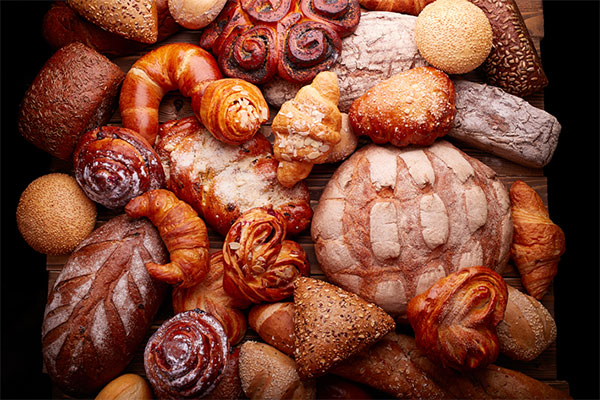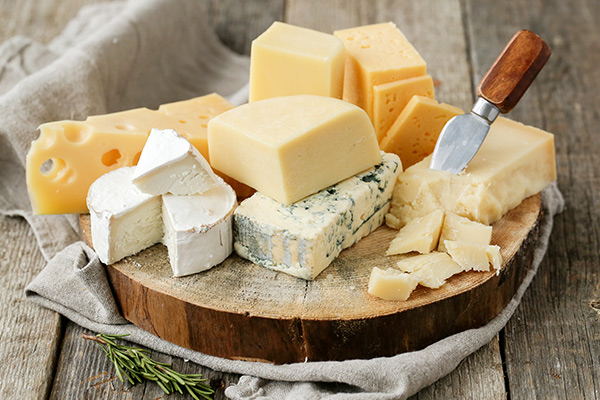Salt Intake per Capita
Average salt daily consumption in grams
NutraSal® salt substitutes have been formulated to preserve the sensory and technological functions of common salt in food, allowing partial or even total replacement of the latter.
NutraSal® salt substitutes have been formulated to preserve the sensory and technological functions of common salt in food, allowing partial or even total replacement of the latter.
The BIS Award is carried out through the Brand Preference Survey, in a universe of approximately 55 thousand professionals within the Brazilian food market. NutraSal® Salt Substitutes line has won for 2 consecutive years (2018 and 2019) the first prize in the “Hyposodium Salt – Sodium Reducer” category proving the superior sensory quality of our salt replacers.



Reducing salt in baked products is not an easy task as it is one of the four most important ingredients to prepare good tasting doughs together with yeast, flour and water. Until now it has proven to be an essential ingredient as it affects the dough properties and determines the final flavour of the product. Nevertheless bakery & pastry products are one of the main food categories with higher sodium rates.
Our NutraSal® range can help you reduce the content of salt in baked goods in order to achieve the 5g daily consumption suggested by WHO without compromising the final taste or the doughs properties.

According to Global Data, the global prepared meals sector accounted for US$90,690.3 million in 2018 with an expected CAGR of 4% until 2023 being Western Europe the second largest consumer. The highly urbanized and busy lives of consumers, such as the UK, France or Germany, are driving high prepared meals consumption rates in the region.
The health & wellness trend is a key driver in this category and sodium reduction is a major concern. NutraSal® salt substitutes can help your product differentiate within the low sodium product range as flavour will not be a concern.

Replacing salt in dairy products such as cheese doesn’t come easy. Salt plays an important role in the quality of the product and the final acceptance of the flavour among consumers. The saltiness of the cheese influences its quality due to its effects on the composition, microbial growth and enzyme activity. It exerts a significant influence on its rheology and texture, as well as on its maturation, mainly through its effects on water activity.
Given that cheese consumption is increasing worldwide, it is important to consider reducing its salt levels in a way that does not affect its consumption.

In a processed meat product, salt helps to bind the meat proteins together and acts as a binding agent between meat and fat. It also increases the water binding capacity during cooking so that the final product has improved texture, tenderness, and palatability. Nevertheless, one of the major health trends in the processed meat market is sodium reduction since these products usually contain high levels of salt.
Our NutraSal® range can be used in all kinds of meat products and has been formulated to serve the meat industry with sodium reduction and replacement of common salt solutions that don’t affect the final taste to ensure customer satisfaction.

Processed snacks was the leading market with a value share of 30.4% in 2018. In today’s world, the consumption of snacks is well stablished and it’s increasing year by year because of its functionality. Consumers’ busy schedules will further contribute to the “snackification” trend during the coming years, as they snack more often than usual to get a quick energy boost. Many of today’s snacks contain high salt levels and contribute to the high salt intake found in almost all countries around the globe.
Nutramax has conducted trials for different snacks like salty peanuts, chips or popcorn with optimal results that confirm that our NutraSal® product range has an excellent performance and taste.

Although NutraSal® has been developed to supply the food industry with a sodium alternative to reduce salt intake worldwide, our salt substitute line can also be used and commercialized as table top salt. Within our product range, we count with NutraSal 50% less sodium crystalline and NutraSal Zero sodium crystalline, both available in an all-natural alternative.
NutraSal® represents a healthy alternative for hypertensive people or people suffering from any cardiovascular disease who are looking to reduce to almost zero their daily sodium intake.
To prove NutraSal® Salt Substitutes quality, a sensory test with 100 panelists was performed at UNICAMP (University of Campinas, Brazil) with toasts prepared with NutraSal® 50% (and therefore with 50% LESS SODIUM!) and toasts with common salt (see graphic).
The test result showed that there was NO significant difference in overall acceptance, overall taste, bitter taste, metallic taste, umami and residual taste.


The main source of sodium in our diet is salt and most people consume too much, on average between 9 and 12g according to the WHO, which supposes three times more than the recommended maximum intake.

Salt added at the table or during cooking represents only 15% while the remainder of salt consumed is due to the sodium content of foods (10%) and added salt in processed foods (75%).

The main sources of sodium by food categories in Western Countries are meat products (27%) followed closely by bakery goods (26%) and in third place dairy products (13%).

Elevated sodium intake is associated with a higher risk of stroke, cardiovascular disease, coronary heart disease and kidney disease, fatal or otherwise.

Worldwide high blood pressure affects over 40% of adults over 25 and is the main general risk factor for death or disability.

If salt intake were within WHO recommended standards there would be a 15% decrease in stroke deaths and a 10% reduction in infarction deaths.

According to the World Health Organization (WHO), reducing sodium intake significantly reduces both systolic and diastolic blood pressure in both adults and children. The WHO also states that we should reduce sodium intake to less than 2 grams with an overall 30% reduction of sodium in global consumption by 2025.
The reduction of sodium intake to the suggested levels would bring many health benefits:




Average salt daily consumption in grams

